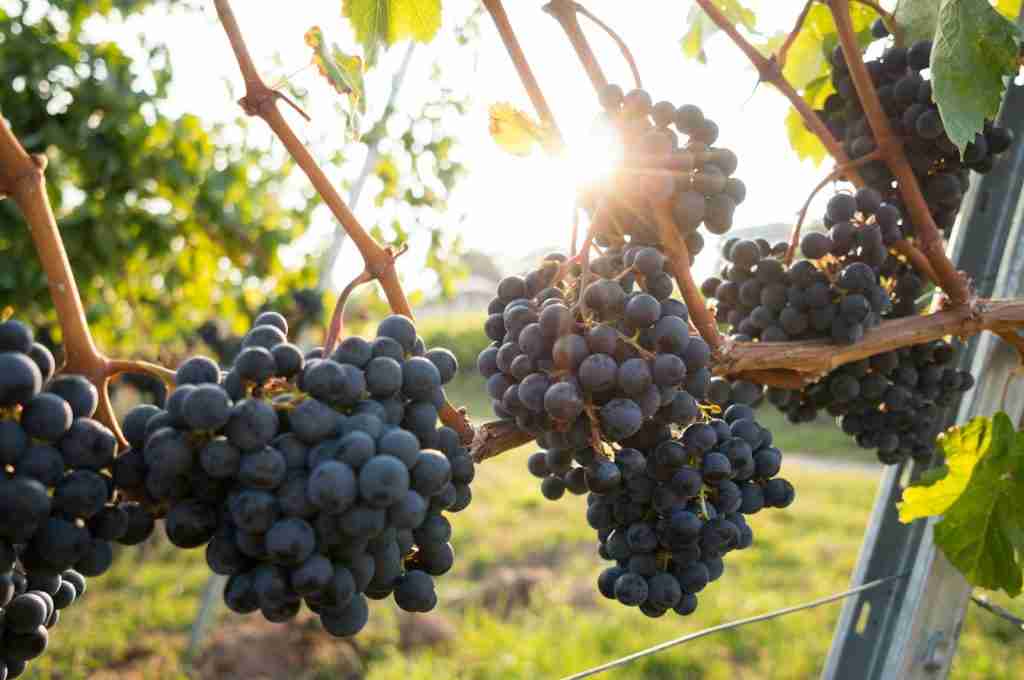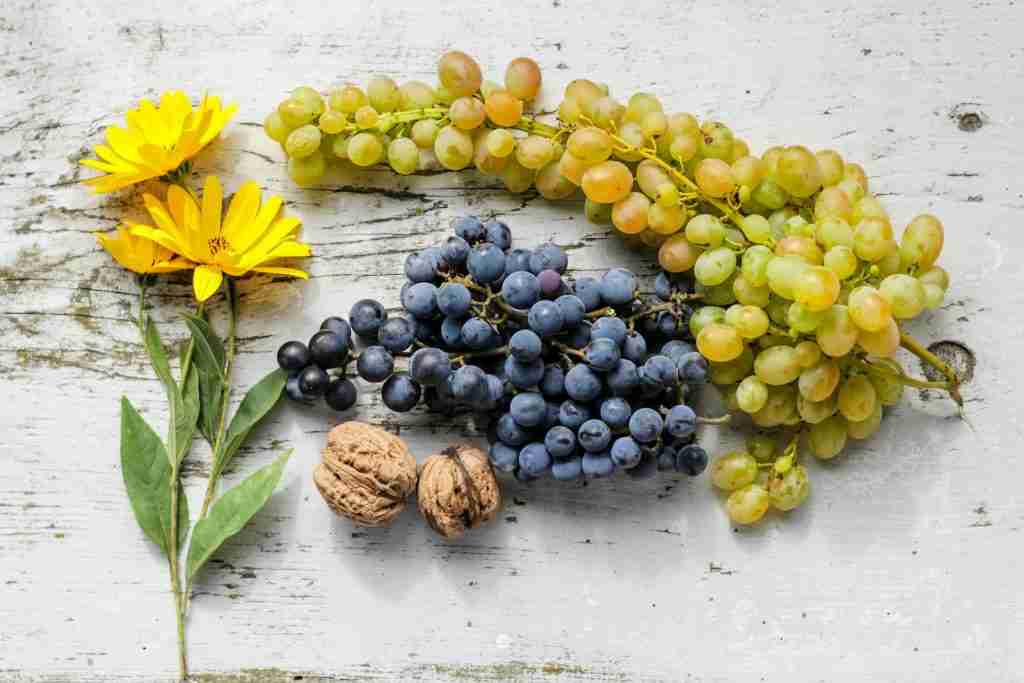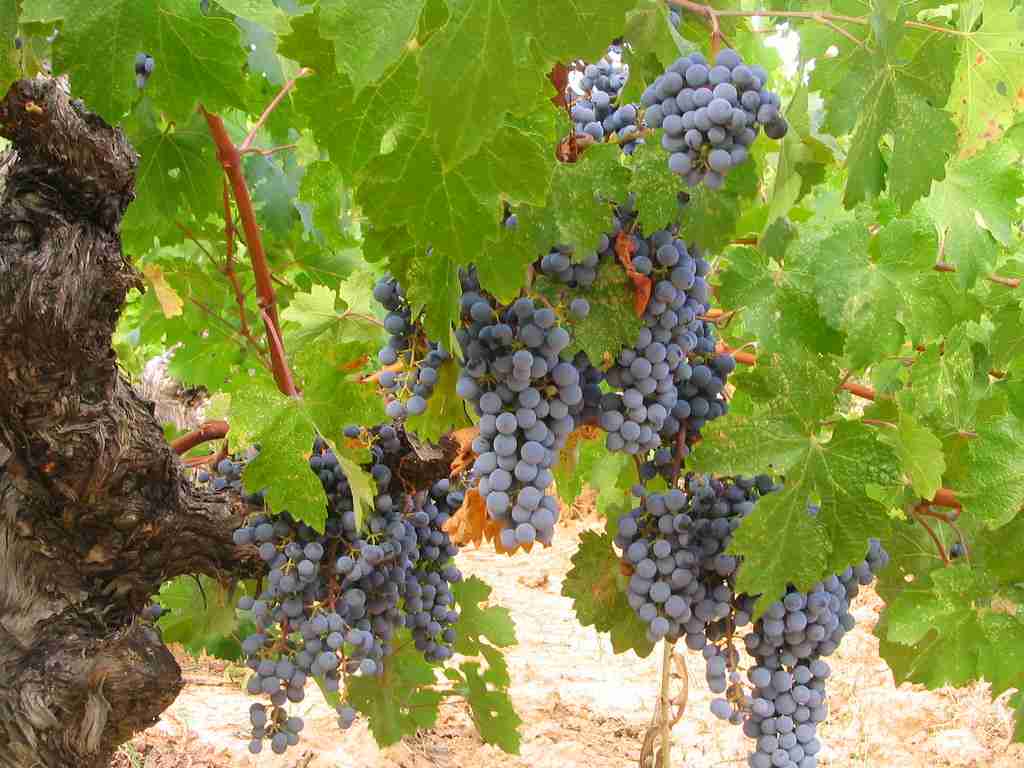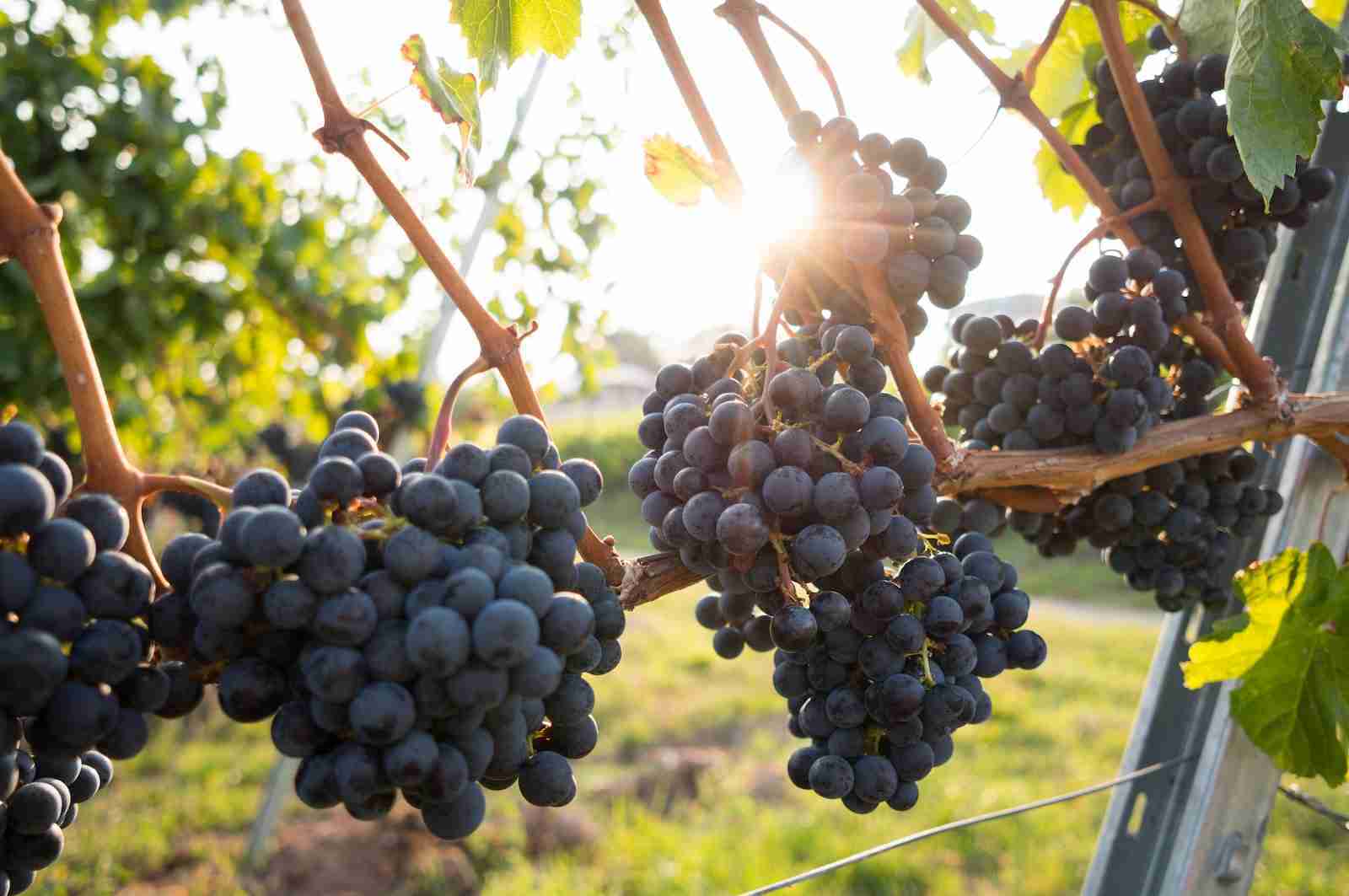25 Fun Facts About Grapes | It’s Not What You Think
1. Grapes are a type of berry that grows in clusters.
Grapes are a type of fruit that grows in clusters on woody vines. They are small, spherical berries that come in different colors like green, red, purple, and black, depending on the variety.
Grapes are enjoyed fresh, dried, or used to make wine, grape juice, jelly, and other food products.
2. Grapes are a good source of vitamins C and K.
Grapes are a good source of vitamins C and K, which play important roles in maintaining overall health. Vitamin C supports a strong immune system and healthy skin, while vitamin K helps with blood clotting and bone health.
Grapes also contain antioxidants like polyphenols and flavonoids, which can help protect against chronic diseases like cancer and heart disease.
3. Grapes are used to make synthetic leather.
Synthetic leather made from grapes utilizes the byproducts of wine production, primarily grape pomace, comprising skins, pulps, seeds, and stems. After soaking in hot water until hardened, it resembles leather in texture.
Unlike traditional leather, grape skin leather lacks natural oils, rendering it susceptible to cracking, hence, a water-based polyurethane coating is often applied for protection. Despite this, grape leather remains predominantly composed of recycled and renewable materials.
This innovative use of grape waste not only reduces environmental impact but also promotes a circular economy in winemaking. Approximately 2.5 kilograms of waste can yield one square meter of grape skin leather, significantly contributing to sustainability efforts in the wine industry.
4. Grapes are one of the oldest cultivated crops in the world, dating back to ancient times.

Grapes have been cultivated for thousands of years and were an important crop in ancient civilizations such as Egypt, Greece, and Rome. The cultivation of grapes for wine production dates back at least 8,000 years in what is now Georgia.
Grape cultivation and winemaking spread throughout the Mediterranean and Europe, eventually reaching the Americas and other parts of the world.
Today, grapes are grown on every continent except Antarctica.
5. China is the biggest grape grower in the world.
In 2022, global grape production amounted to about 74,942,573 metric tonnes, experiencing a slight decrease from the previous year’s 76,750,674 tonnes. China’s dominance in grape cultivation was evident, contributing 16.8% of the world’s total grape output.
Italy followed closely with 11.3%, and France with 8.3%. This significant production scale reflects the substantial agricultural infrastructure and climatic suitability for grape cultivation in these regions.
6. Grapes are used for making a variety of products, including wine, grape juice, raisins, and grape jelly.
Grapes have a versatile usage in the food industry. They are commonly used to make wine, grape juice, raisins, and grape jelly. The process of making these products varies.
For example, wine is made by fermenting grapes, while grape juice is made by extracting the juice from grapes. Similarly, raisins are made by drying grapes, and grape jelly is made by boiling grape juice with sugar and pectin.
7. There are over 8,000 varieties of grapes, each with a unique flavor and texture.
Grapes come in over 8,000 varieties, which differ in color, size, taste, and texture. Some of the most popular varieties include Thompson Seedless, Cabernet Sauvignon, and Concord grapes.
Each grape variety has its own unique flavor profile, with some being sweet, while others are tarter.
The texture of grapes also varies depending on the variety, with some being crunchy and firm, while others are soft and juicy.
8. Grapes were the first Fruit domesticated by Humans.

Grapes were likely the first fruit domesticated by humans, with genomics revealing that grapevines were first domesticated in two separate regions around 11,000 years ago.
Scientists conducted a genomic analysis of grapevine varieties, identifying simultaneous domestication events in Western Asia and the south Caucasus.
These domestication events coincided with the development of agricultural farming and the domestication of table grapes.
9. Grape seeds are often used to make grape seed oil, which is a popular cooking oil.
Grape seeds are a byproduct of the wine-making process and are often used to produce grape seed oil. This oil is a popular cooking oil due to its high smoke point, mild flavor, and health benefits.
Grape seed oil is rich in polyunsaturated fatty acids, antioxidants, and vitamin E. It is used in cooking, as a salad dressing, and in skincare products.
10. Grapes are grown on vines, which can live for over 100 years.
Grapes are typically grown on vines that can live for a long time, sometimes over 100 years. These vines require a specific set of conditions to thrive, including warm temperatures, well-draining soil, and plenty of sunlight.
Grapes are also known to be sensitive to pests and diseases, so proper care and maintenance are important for a healthy harvest.
Once the grapes have ripened, they are carefully picked by hand or by machine and used for a variety of purposes.
11. The Concord grape, which is used to make grape juice, was first cultivated in 1849.
The Concord grape, a popular grape variety used for making grape juice, was first cultivated in 1849 by Ephraim Wales Bull in Concord, Massachusetts.
The grape was a crossbreed of wild grape species and quickly gained popularity due to its distinctive flavor and large size.
Today, Concord grapes are still widely grown and used in the production of juice, jelly, and other grape products.
12. The phrase sour grapes comes from Aesop’s fable, The Fox and the Grapes.
The phrase “sour grapes” has its origins in the fable “The Fox and the Grapes” by Aesop, in which a fox is unable to reach a cluster of grapes and, after several attempts, decides that they are probably sour and not worth eating.
The moral of the story is that people often reject what they cannot have, and then pretend that it was not desirable in the first place.
13. In ancient Greece, grapes were associated with fertility and were often used in religious ceremonies.
Grapes were considered symbols of fertility in ancient Greece and were frequently used in religious rituals. The fruit was also popular in Greek culture for its nutritional and medicinal benefits.
14. Grapes were first introduced to the Americas by Spanish explorers in the 16th century.
Spanish explorers brought grapes to the Americas for the first time in the 16th century, introducing them to what is now Mexico and the southwestern United States.
From there, grapes were cultivated and spread to other parts of North and South America, eventually becoming an important crop in many countries throughout the Americas.
15. Grape vines are susceptible to diseases such as powdery mildew and downy mildew.
Grape vines can be affected by a number of diseases caused by various pathogens such as fungi, viruses, and bacteria. Powdery mildew and downy mildew are two common fungal diseases that can infect grapevines, leading to reduced yield and fruit quality.
Preventive measures like good vineyard management practices, including regular monitoring and timely treatment, can help minimize the impact of these diseases.
16. The grape harvest season is called “vendange” in French.

The term “vendange” is used in French to refer to the grape harvest season, which typically occurs in the fall.
This term is commonly used in wine-producing regions of France and is often associated with traditional grape-picking practices, including the use of hand tools and manual labor.
The “vendange” is an important time for wine producers, as the quality of the grapes harvested can have a significant impact on the final product.
17. Grape vines can grow up to 50 feet in length.
Grapevines are a type of climbing plant that can grow up to 50 feet in length. They are woody perennials that require support structures to grow, such as trellises or arbors.
The length of the vine depends on the variety of grapes and growing conditions, such as soil type and climate.
As they grow, grapevines produce shoots that can be trained to grow along the support structure, allowing the fruit to hang down for easy harvesting.
18. The longest grapevine in the world is located in Slovenia and is over 400 years old.
The world’s longest grapevine called the “old vine” or “stara trta,” is located in Maribor, Slovenia. It is over 400 years old and covers an area of about 400 square meters.
The vine produces about 35 to 55 kilograms of grapes each year, which are used to make a special type of wine called “žametovka modra.” The vine is considered a national treasure and is protected by law.
19. The word “grape” comes from the Old French word “grap,” which means “bunch of fruit.”
The term “grape” is derived from the Old French word “grap,” which means “bunch of fruit.” The French word itself comes from the Latin word “racemus,” which also means “cluster of grapes.”
The name is apt since grapes grow in clusters on vines. The word “grape” has been used in the English language since the 14th century.
20. The skin of red grapes contains a natural pigment called anthocyanin, which gives the fruit its color.

Anthocyanin is a water-soluble pigment found in the skin of red grapes that gives the fruit its red, blue, or purple color. This pigment is a type of flavonoid and is also found in other fruits, vegetables, and flowers.
Besides providing color, anthocyanin is believed to have various health benefits, such as reducing inflammation and improving cardiovascular health.
21. Grapes are a low-calorie snack, with one cup containing around 100 calories.
Grapes are a nutritious and low-calorie snack that are enjoyed worldwide. One cup of grapes contains around 100 calories and is a good source of vitamins C and K, as well as fiber and antioxidants.
Grapes are also a natural source of energy due to their carbohydrate content, making them a great choice for a pre-workout snack. With their portability and versatility, grapes are a convenient and healthy addition to any diet.
22. The grape is the official state fruit of both New York and Missouri in the United States.
The grape was designated as the official state fruit of New York in 1983 and Missouri in 2003. In New York, the Concord grape variety is specifically recognized as the state fruit, as it is a major contributor to the state’s economy.
Missouri, on the other hand, recognizes the Norton/Cynthiana grape variety, which is a native grape of the region and is often used to make wine.
23. A typical bottle of wine requires roughly 2.5 pounds of grapes.
Making a bottle of wine takes a surprising amount of grapes. Around 2.5 pounds of these juicy fruits get squeezed and processed to fill a typical bottle.
So next time you raise a glass, remember all those little grapes that went into creating that delicious drink.
24. Grapes also contain antioxidants, which can help protect against cancer and heart disease.

Grapes contain antioxidants like polyphenols and flavonoids that can help protect against cancer and heart disease. Resveratrol, another powerful antioxidant found in grapes, has also been linked to reduced inflammation and improved blood sugar control.
By including grapes in your diet, you can benefit from their antioxidant content and potentially lower your risk of developing certain health conditions.
25. Slow ripening enriches grape flavor, benefiting from abundant sunlight and moderate temperatures.
Slow ripening, a key process in grape development, significantly enhances the flavor profile of the fruit. This phenomenon occurs as the grapes receive ample sunlight, allowing them to accumulate sugars gradually while retaining acidity.
Moreover, moderate temperatures during ripening play a crucial role, ensuring a balanced development of flavors and phenolic compounds.
Consequently, regions with favorable climates, such as those found in Switzerland, often produce exceptional wines due to this meticulous ripening process.
FAQS
Yes, consuming grapes daily can be beneficial for health. Grapes are packed with essential nutrients and antioxidants, supporting overall well-being and potentially reducing the risk of chronic diseases like heart disease, cancer, and diabetes. Moreover, they are low in calories and high in fiber, aiding digestion and weight management.
Yes, grapes contain natural sugars, primarily in the form of fructose and glucose. While they are a healthy snack choice due to their abundance of vitamins, minerals, and antioxidants, people with diabetes or those watching their sugar intake should consume grapes in moderation.
The grape diet, also known as the grape detox or grape cleanse, is a short-term diet plan that involves consuming primarily grapes and water for a set period, typically ranging from a few days to a week. Advocates of this diet claim that it can help detoxify the body, promote weight loss, and improve overall health.
Yes, bananas and grapes can be eaten together as part of a balanced diet. Both fruits are nutritious and provide essential vitamins, minerals, and fiber. Some people may experience digestive discomfort when combining certain fruits due to differences in digestion times and fermentability in the gut. It’s generally best to listen to your body and consume fruits in combinations that work well for you.
Grapes can be acidic, especially certain varieties. One of the most acidic grape varieties is the Muscadine grape. These grapes tend to have higher acidity levels compared to other grape varieties, which can contribute to their tart flavor profile.







